NYC’s Forgotten ‘War on Christmas Trees’
Discover how an obscure holiday crackdown affects festive street vendors today!


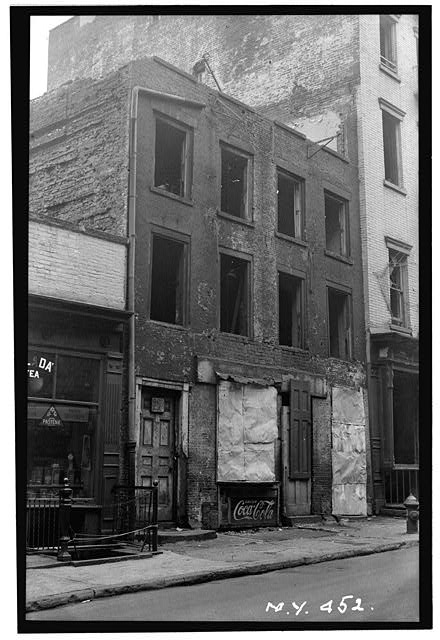
Photo from the Library of Congress.
In 1936, the oldest known house in Manhattan, on the southern end of Cherry Street, was demolished as part of a citywide slum clearance campaign. The Dutch-style town house was constructed around 1760, and reportedly housed some of George Washington’s officers during the Revolution. From October 1936 to January 1937, Arnold Moses of the Historic American Building Survey took a series of exterior and interior photos of this building at 29-29½ Cherry Street. Today, this section of Cherry Street on the Lower East Side is occupied by Knickerbocker Village and the Governor Albert E. Smith Houses, two large public housing projects constructed in the 1930s and 1950s, respectively.
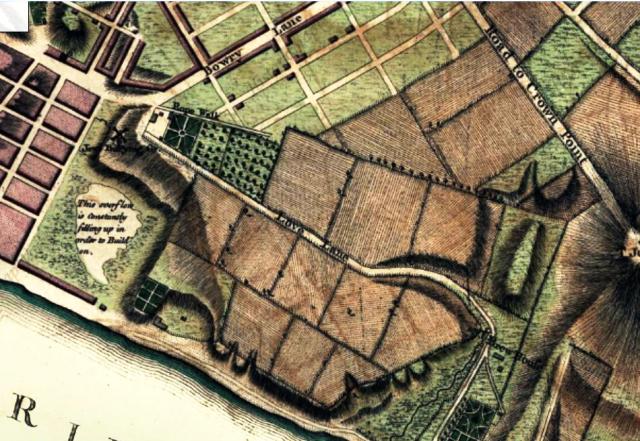
Map via New York Public Library Digital Collections
In the late 1600s, Cherry Street was a small roadway that ran parallel along the East River and served as a pathway to New York City Mayor Thomas Delavall’s cherry orchard. In early years, Cherry Street began near Pearl Street and the present-day approach to the Brooklyn Bridge. In fact, in 1789-90, George Washington lived in Walter Franklin’s house at 1 Cherry Street, where, today, Pearl Street crosses under the Brooklyn Bridge approach.
In the above 1766 John Montresor map, Cherry Street is the small roadway running along the river; Love Lane is today’s East Broadway; the Road to Crown Point is Grand Street; the Rope Walk is Division Street; the Rutgers Farm (bottom right) is the Rutgers Houses public housing development; and the marshy area (bottom left) is now bounded by today’s Cherry Street, Catherine Slip, East Broadway, and Market Street.
Fast-forward 150 years to March 1934, when the newly-formed New York City Housing Authority kicked off its citywide slum clearance campaign. Under this campaign, buildings on Cherry, Madison, Roosevelt, Oak, and other old streets in the Two Bridges neighborhood on the Lower East Side were razed over the years to make way for large public housing developments. One of first buildings ordered demolished was 29-29½ Cherry Street: Tenement House Commissioner Langdon Ward Post said the building was a firetrap and one of the worst tenements in the city.
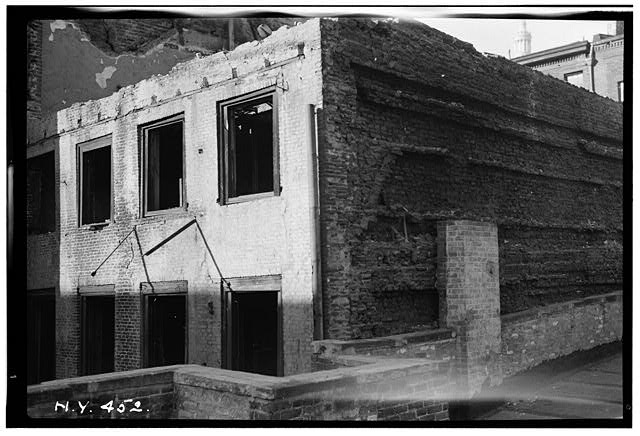
Photo from the Library of Congress.
In October 1936, a scouting crew of the Historic American Buildings Survey (HABS) was exploring the Lower East Side when they saw a wrecking crew demolishing a house constructed of old Dutch brick. They requested that the demolition be stopped pending a detailed inspection of the property. During the next two months, the HABS crew took measurements, made detailed drawings of architectural elements, and took numerous photographs of the building.
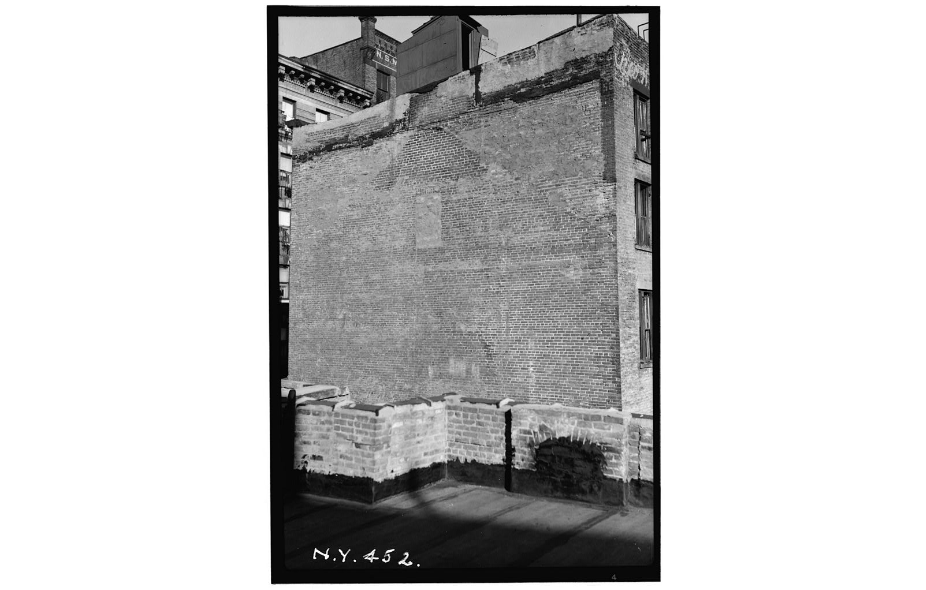
Although the roof was already gone when the HABS crew discovered the building in 1936, this photograph taken from the third floor shows the roof line of an old gambrel roof imprinted on No. 31 Cherry Street, indicating No. 29-29½ had once been four stories. Photo from the Library of Congress.
According to the survey report, HABS No. NY-452, the home featured a cellar and a stone foundation, brick exterior walls, wood floors, and interior walls constructed of plaster and wood studs. Although the roof, window sashes, and doors had already been removed, the interior was still in good condition.
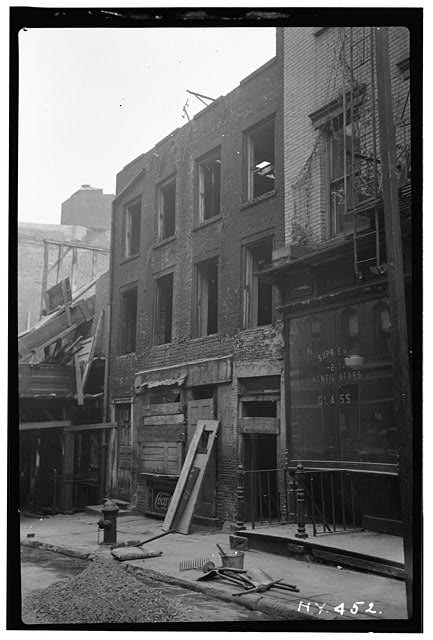
Photo from the Library of Congress.
Based on research, the HABS concluded that the house was constructed by New York merchant John Beekman around 1760, and thus, predated the 1765 Morris-Jumel Mansion in Manhattan’s Washington Heights neighborhood. According to the survey report, which details the home’s history, Beekman purchased the lot on Cherry Street from Stephen Bayard in 1750. In 1773, Beekman was recorded as the owner of a house and lot at this address, which indicates the house was built sometime between 1750 and 1773.
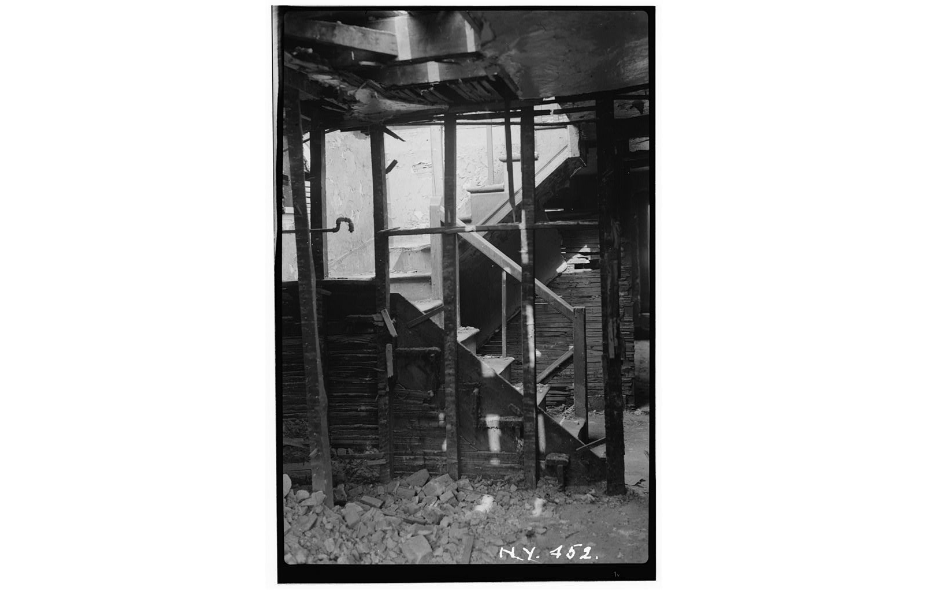
An interior photograph of 29-29½ Cherry Street shows an intact stairway leading to what was once the attic.Photo from the Library of Congress.
Although the National Park Service made an effort to restore and preserve the old Dutch home, they were unable to find anyone to finance this undertaking. Reportedly, some paneling was salvaged and sold to the Museum of the City of New York, where it was incorporated in the Cherry Street Alcove in the museum’s New York Interiors exhibit.
For more on New York city’s oldest houses, check out The Oldest Buildings in New York City’s Five Boroughs. Get in touch with the author @HatchingCatNYC
Subscribe to our newsletter